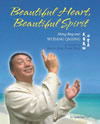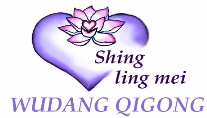|
|
 |
 |
 |
 |
|
 |
 |
 |
 |
 |
|
 |
 |
|
Wudang Monestary
|
|
|
|
|
|
Wudang qigong (formerly spelled Wu Tang) is China's foremost school of Daoist qigong. It is a broad system, containing many forms and styles that are practiced for health and healing, spiritual growth, and self-defense. Its roots trace back to the monasteries of the Wudang Mountains in Hubei Province, where it arose from internal energy arts practiced by Daoist monks. The ancient Daoists believed that we can transform ourselves through internal energy work that develops mind, body, and spirit. Six hundred years ago, Zhang San-feng, a Daoist monk from Wudang Monastery (Wudang Dao Kuan), became known for his extraordinary abilities. Gradually, other monasteries throughout the Wudang Mountains adopted his methods. As word of him spread beyond Wudang, he was brought to serve at the emperor's court. His system of qigong, originally called Wudang Longmen (which means Dragon Gate, from Wudang) eventually became known as Wudang qigong, with Zhang San-feng its founding patriarch.
|
|
|
|
Shing ling mei Wudang qigong is a holistic practice that nourishes body, mind, and spirit. It reminds us that health and heart go hand in hand, for an open heart and altruistic spirit are indeed the most powerful healers of all. |
|
|
|
Shing ling mei
(which translates as beautiful heart, beautiful spirit) is a contemporary form of Wudang qigong, developed by Wudang qigong's 18th patriarch, Qing Chuan Wang. It is a gentle,
pleasurable, energy practice that teaches students to feel, guide, and improve the quality and quantity of their qi through a combination of slow, relaxed movements and quiet, focused attention.
Students learn to guide qi-energy through the body and exchange it with nature's energies. They learn how to flush away toxic qi while renewing the body's supply of fresh qi. Benefits of steady practice include fewer illnesses, faster healing, increased vitality, reduced stress, greater mental clarity and emotional ease. Shing ling mei emphasizes the important role of attitude and outlook in building, balancing and improving the quality of your qi.
|
|
|
|
|
| How is Shing ling mei Wudang qigong different from other health practices? |
|
|
|
|
|
The key to practice is learning to lead qi with the mind by feeling it and visualizing it within the body.
This inner movement of qi, not the outer form, is the important part.
Because the ultimate power of the practice depends on inner movement, Shing ling mei can be practiced standing, sitting, or lying
down, making it ideal for people who can't participate in normal activities.
Order BOOK and/or DVD
click here

|
|
|



